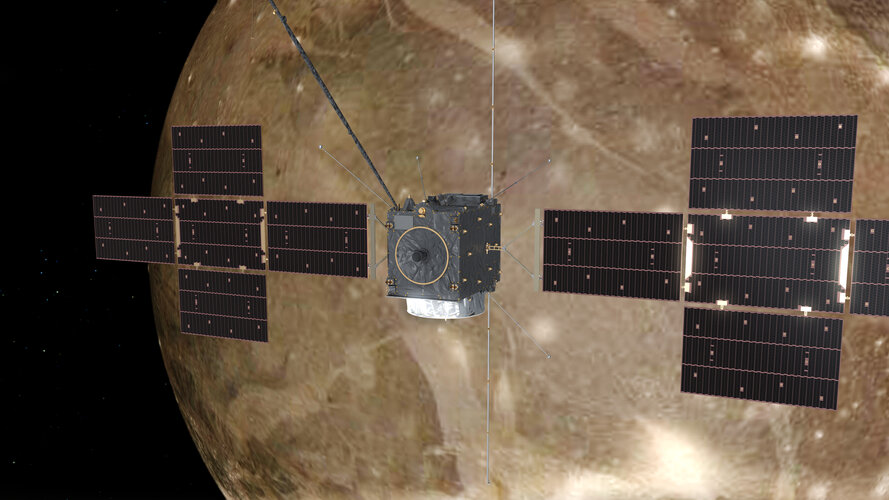
Satisfied, the team moved on to the second segment.
The command was given to fire the actuator. The telemetry arrived before the images, but something was wrong. The expected oscillation was not showing. A few seconds later, the camera image came back. The boom segment was still clearly visible in its stowed configuration. The deployment had failed.
“You experience a state of disbelief,” says Ronan, “The most unwanted situation is happening. We checked the picture two, three, four times. We tried again to activate the actuator, but nothing happened.”
Also watching in a state of professional disbelief were the team at Airbus Defence and Space, Toulouse, France. Chosen as the spacecraft’s prime contractor in 2015, they were responsible for leading the design, construction and testing of the spacecraft and bringing in other companies to supply components, systems and instruments as needed.
“We knew that we had to quickly try to understand what had happened, and then try to find a workaround,” says Frédéric Faye, Airbus’s chief engineer for Juice.
The very next morning, with the disbelief banished from their minds, the teams gathered online for a teleconference to share their insights and discuss the anomaly. On one hand, they knew they had to find some way to free the stuck segment, but on the other they knew that they could not do anything that would compromise the deployment of the other segments, or indeed the rest of the spacecraft.
The first thought that occurred to the teams was that perhaps some ice had formed on the pin holding the segment in place. Every time a spacecraft leaves Earth, it finds itself in a cold, airless environment. This sudden and dramatic loss of air pressure means that a small amount of water vapour will suddenly escape from the material used to make the craft. This can then freeze onto the incredibly cold surfaces of the spacecraft.
Since there are no heaters on the spacecraft near RIME, removing the ice would mean rotating the spacecraft so that the antenna faced the Sun. But, the surface of the spacecraft holding RIME was designed to be a ‘cold face’, meaning that it was never intended to be exposed to the direct sunlight just after launch. Nor were the components, instruments and systems that were attached to it.
After several days of study, the team began gradually slewing the spacecraft so that the surface was illuminated. “We did eight slews over two weeks to illuminate the RIME bracket,” says Angela Dietz, Spacecraft Operations Manager at ESOC. Each time they exposed the surface for longer, carefully watching the telemetry from the onboard sensors to understand the limits of this operation. At first, the manoeuvre lasted just 25 minutes. By the end, they felt comfortable exposing the surface for 73 minutes at a time.
Simultaneously, other possible recovery scenarios were being contemplated.
If it were not ice holding RIME shut, and the pin had simply stuck, then perhaps shaking the spacecraft would jog it loose – although the word ‘shaking’ is too extreme to describe the actual motion.
The spacecraft weighs six tonnes and the thrusters onboard can only rock it back and forth very gently. Nevertheless, the teams felt it was worth trying. The stuck pin probably only needed moving by a millimetre or two, but the teams had to be careful. They could not risk harming anything else with a violent jolt of the spacecraft. So, as the team had done with the heating, they began testing this manoeuvre cautiously.



